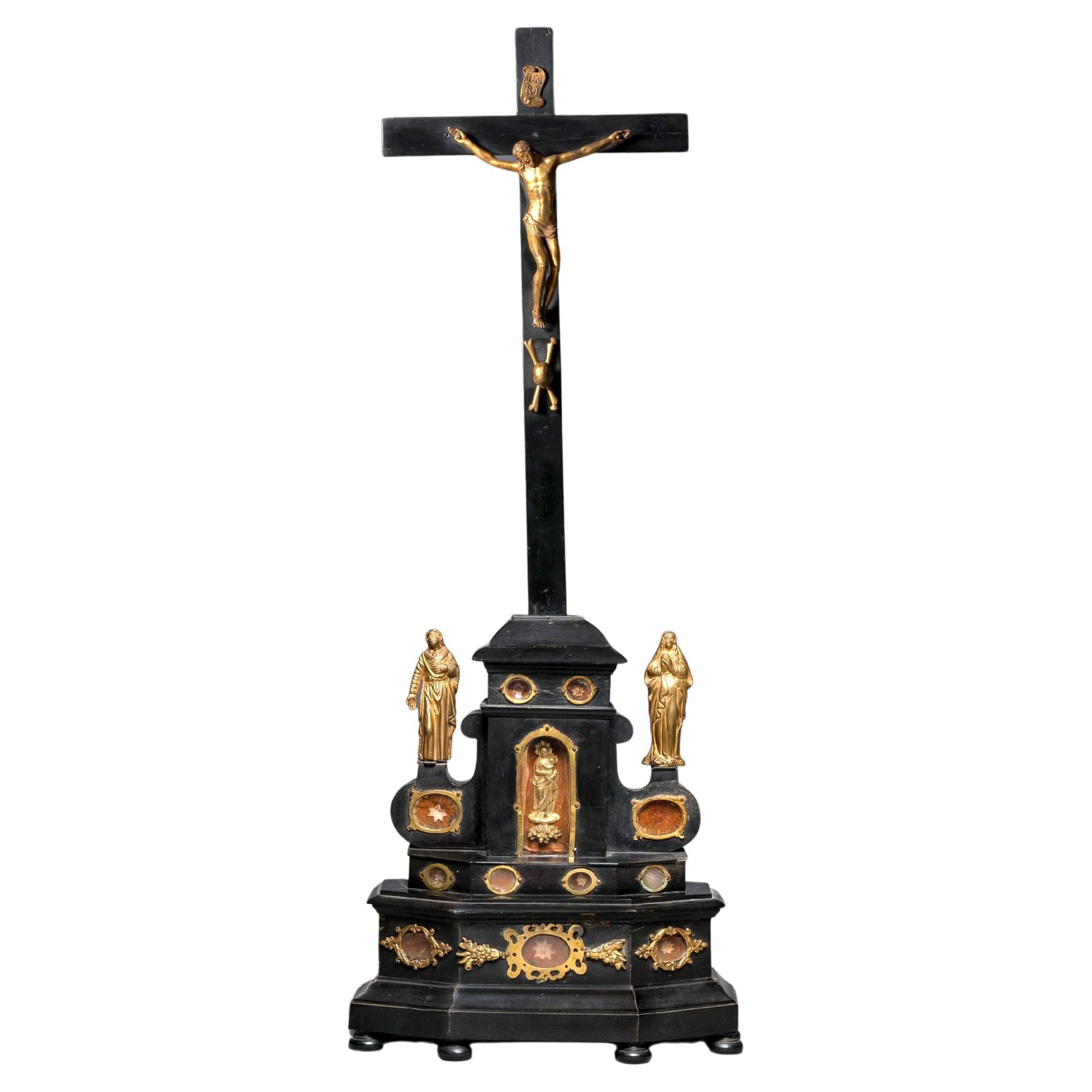$3,895.00
An ebony wood and gilt bronze reliquary altar cross after Giambologna
Anonymous (corpus after a model by Giambologna)
ca. 1700; Netherlandish or Northern Rhinish
Ebonized wood, gilt bronze appliques and statuettes, textiles and relics
Approximate size: 75 cm (h)
The present altar cross features a gilt bronze crucifix cast after a model by Giambologna, originally executed ca. 1579-89. In particular, the present figure of Christ follows examples finished by Giambologna’s assistant, Antonio Susini, like one example made for the altar of the Salviati Chapel in San Marco—Florence, Italy. However, the free reinterpretation of Christ’s hair and face could alternatively suggest the hand or influence of Taddeo Curradi, another friend and collaborator of Giambologna and Susini.
The present crucifix was likely cast later than the model’s invention, in the Netherlands or Northern Germany. It was not uncommon for Italian models to travel North of the Alps, and in particular, Giambologna’s assistant, Adriaen de Vries, was one such channel for the diffusion of such models into those territories.
The ebony wood construction of the present altar cross is tantamount to the talents of Flemish woodworkers of the period and another architecturally related example, also featuring a crucifix cast after Giambologna’s model, is found in the treasury of Cologne Cathedral (inv. RBA 135 379).
The figure of Christ and its accompanying skull, representing Golgotha, are probably earlier than the other bronzes present on the altar cross, cast probably during the 17th century, while the titulus, central applique nested in a niche and the flanking free-standing figures of St. John and Mary, in-the-round, are later inventions, perhaps of the early 18th century.
As with other objects-of-devotion, this distinctive altar may have been updated and reinterpreted over the duration of its history. In this case, the bronze crucifix has received a new context on the present altar. Some veneers may be later replacements and the relics may replace what could have originally been granite insets, replaced in the 18th century by relics backed by velvet. Some features of the woodwork could be later, like the base, stepped tier, and socle for the cross.
Condition: Rubbing on bronzes, commensurate with their age. Loss to a finger on the proper right arm of Christ and the perizonium along the hip. Finial appliques once flanked the ends of the crucifix, now lost. Velvet backing for the relics is possibly original (introduced during the 18th century) but shows signs of wear commensurate with age. The cross is slightly crooked due wear and exposure to various climate conditions over time. There are various dings, scratches and losses to the plinth, typical to works of this age and use. Overall, in fair condition and still retaining the essence of its former glory.
